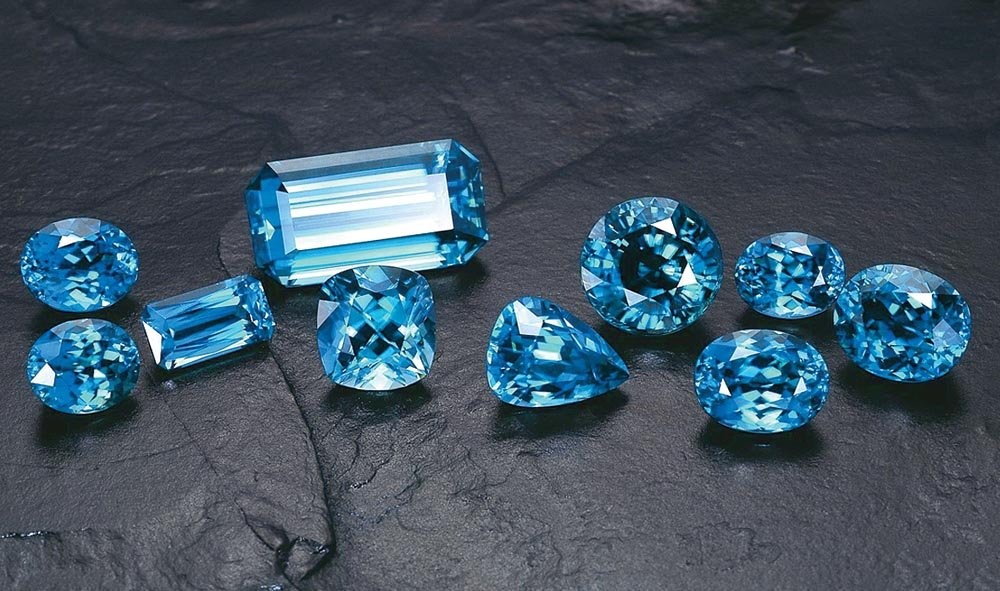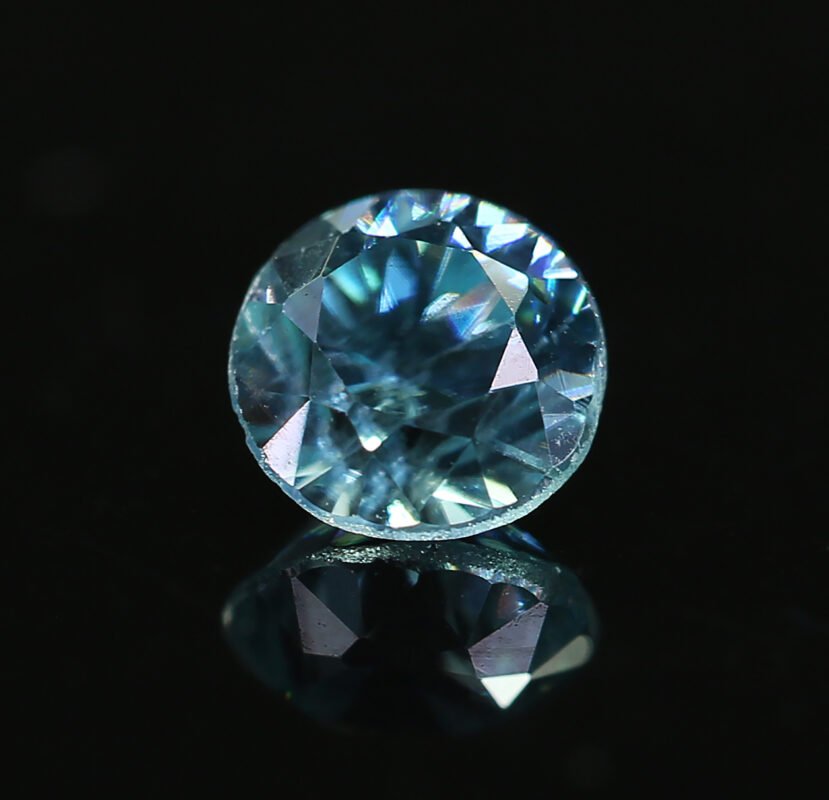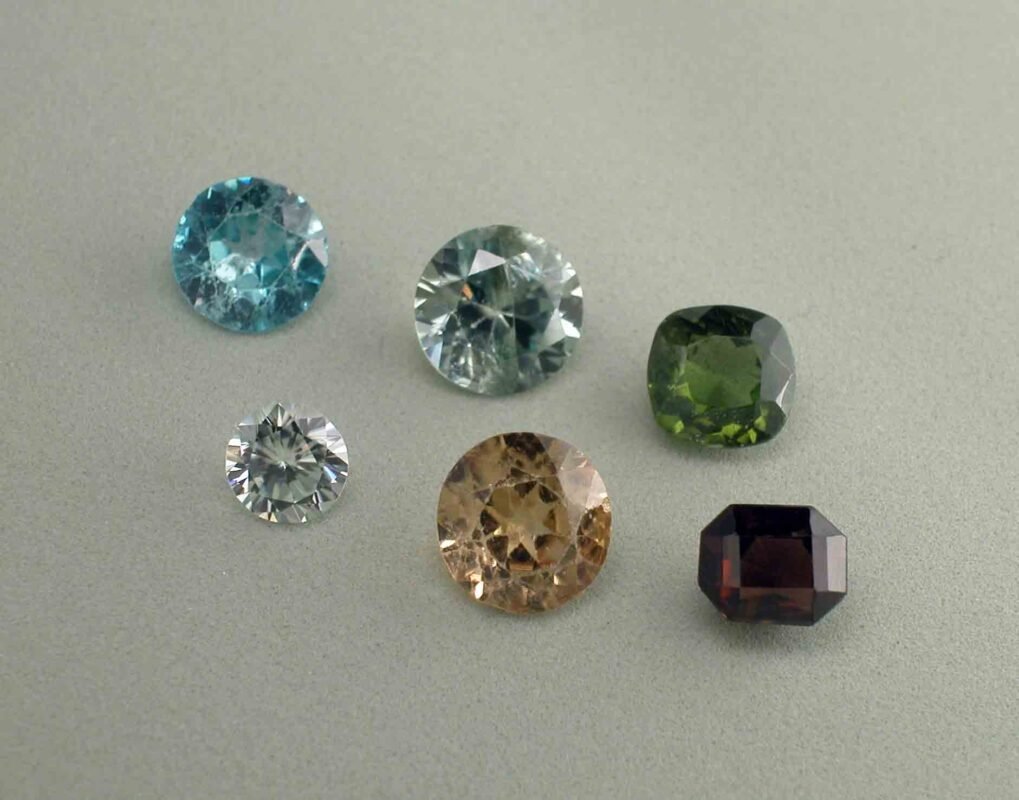Introduction to Zircon Stone
The zircon stone is a natural gemstone that has gained prominence for its unique properties and versatility in jewelry making. Historically, zircon has been celebrated for its brilliance and fire, making it an attractive alternative to more expensive gemstones such as diamonds. Unlike cubic zirconia, which is a synthetic material, zircon is a naturally occurring mineral found in many geological deposits around the world. This distinction is crucial because it often leads to confusion among consumers regarding the value and authenticity of the stones.

Geologically, zircon stone is composed of zirconium silicate (ZrSiO4) and is renowned for its remarkable durability, ranking between 6 and 7.5 on the Mohs scale of mineral hardness. Zircon’s durability enables it to withstand wear and tear over time, making it an excellent choice for various types of jewelry that people often wear daily. Additionally, zircon stones come in a range of colors, including colorless, yellow, blue, green, and brown, each variant adding to its charm and appeal.
Zircon gemstone is predominantly sourced from countries such as Australia, Sri Lanka, Brazil, and Madagascar. Each of these regions contributes to the diverse array of colors and quality found in zircon gemstones. People have valued zircon for its aesthetic qualities and cherished it in alternative practices for its purported healing properties and effects in meditation. Culturally, people used zircon in ancient times for talismans and ornaments.

In recent years, zircon stone prices have fluctuated based on factors such as demand, color rarity, and market trends. Understanding these dynamics can assist potential buyers in making informed decisions when considering zircon gemstone price. Overall, the significance of zircon extends beyond its mere physical appearance, resonating with historical, cultural, and spiritual dimensions. The subsequent sections will delve deeper into its uses, price history, and insights into the zircon stone’s enduring appeal.
Uses of Zircon Stone
Zircon stone stands out for its versatility and aesthetic appeal, making it a preferred choice in various applications. Primarily renowned for its use in jewelry, zircon gemstone comes in a multitude of colors, the most popular being blue, white, and green zircon. The vibrant hues of these gemstones provide a visually appealing alternative to more expensive stones like diamonds. Many jewelers tout the brilliance and fire of zircon, contributing to its growing popularity in contemporary designs. As a result, the zircon gemstone price can vary significantly based on color and clarity, with high-quality pieces fetching notable sums in the market.

In addition to its significant role in the jewelry industry, zircon also finds extensive applications in industrial sectors. One of the key uses of zircon stone is in the manufacturing of ceramics and refractory materials. Its high melting point and thermal stability make it an ideal candidate for creating heat-resistant bricks and tiles, essential in various construction and industrial processes. These materials utilize the unique properties of zircon to withstand extreme conditions, ensuring durability and longevity.

Furthermore, zircon stone is also utilized in scientific and technological applications. In nuclear reactors, zircon is employed as a cladding material due to its robust properties, ensuring safety and performance. Collectors often seek zircon gemstones for their rarity and unique characteristics, demonstrating the stone’s appeal beyond ornamental jewelry. The diverse applications of zircon highlight its importance across different industries, solidifying its reputation as both a stunning gemstone and a functional material in various settings.
Zircon Price History and Market Trends
The price history of zircon stone reveals a dynamic market influenced by numerous factors, primarily driven by supply and demand in various sectors. Zircon, valued both as a gemstone and an industrial mineral, has experienced fluctuations in market pricing that reflect changing consumer preferences, economic conditions, and technological advancements. Historically, the zircon gemstone price has seen considerable variability. In the late 20th century, prices were relatively stable, hovering in the lower range due to consistent supply from major producing countries, such as Sri Lanka, Australia, and Cambodia. However, as appreciation for this versatile gemstone grew, particularly in the jewelry sector, market values began to appreciate.

In recent years, the demand for zircon gemstone has surged, partly due to its popularity as a diamond alternative and the increasing interest in sustainable and ethically sourced minerals. Consequently, zircon stone prices have begun reflecting a more bullish trend, with market analysts reporting gradual increases over the past decade. Events such as natural disasters affecting mining operations or geopolitical issues in major exporting countries can cause temporary spikes in zircon gemstone prices, leading to increased volatility in the market. Moreover, technological innovations in its processing and refinement can lead to efficiency improvements, potentially influencing market pricing.
Looking ahead, current market trends suggest a promising future for zircon.Experts expect demand to rise in both the jewelry and industrial sectors, with applications ranging from ceramics to electronics. Investors and collectors should remain vigilant to supply dynamics, such as emerging producers or advancements in synthetic alternatives, as these will likely affect the zircon stone price significantly. As the industry evolves, continued monitoring of market trends is vital for making informed investment decisions regarding zircon gemstones.

Conclusion and Future Outlook on Zircon Stone
We have explored the multifaceted attributes of the zircon stone, ranging from its historical significance to its contemporary applications in jewelry and industry. The zircon gemstone, valued not only for its aesthetics but also for its durability, boasts a rich history that intertwines with human culture and economy. We have discussed the various factors influencing the zircon stone price, which fluctuates based on quality, size, and rarity. Understanding these dynamics can aid consumers and investors in making informed decisions regarding zircon gemstone price trends.

Looking ahead, the future of the zircon stone appears promising. Continued advancements in technology may unveil new possibilities for its application, particularly in the fields of green technologies and sustainable practices. Innovations such as enhanced methods of gem processing or developments in synthetic zircon could emerge, providing both economic and environmental advantages. Furthermore, as the demand for ethically sourced materials grows, the importance of sustainable sourcing will likely shape the zircon market landscape. Consumers are becoming increasingly conscientious of the environmental impacts of their purchases, prompting suppliers to prioritize eco-friendly practices.

As interest in zircon gemstones expands, it is vital for individuals to remain informed about the latest trends and developments surrounding these stunning stones. Whether one is a collector, an artisan, or simply an enthusiast, staying updated on zircon trends can enhance appreciation and knowledge of this remarkable material. By prioritizing responsible sourcing in buying or crafting jewelry, individuals can contribute to a more sustainable market—one that respects both nature and society. Zircon stone is likely to remain a sought-after gem, with its unique combination of beauty and functionality ensuring its lasting presence in various applications.
